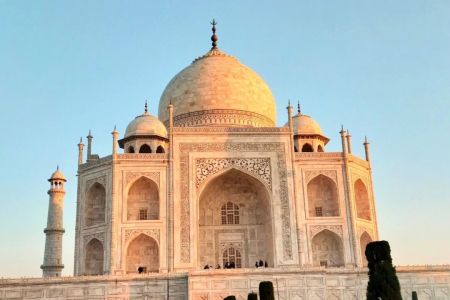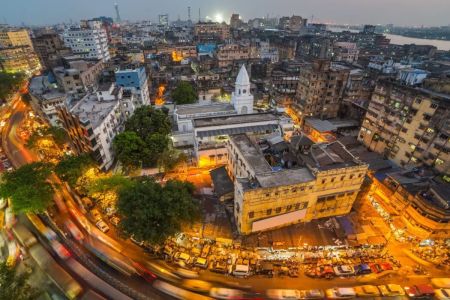Top Historical Sites in Delhi to Visit: A Journey Through Time
1. Why Visit Historical Sites in Delhi?
Delhi, the capital of India, is a city where the past and present seamlessly blend. From its Mughal-era monuments to British colonial structures, Delhi is an extraordinary place for history enthusiasts. Visiting historical sites in Delhi offers a fascinating glimpse into India’s complex and vibrant history, and it’s a unique opportunity to walk through centuries of culture and heritage.
Whether you're a history buff, a photographer, or just someone looking to learn more about this dynamic city, Delhi's historical landmarks will leave you mesmerized. The city is home to some of the most iconic historical sites, each telling its own story about India’s rich heritage. With these sites, you get the chance to explore architecture, art, culture, and history, all in one place.
2. Must-Visit Historical Sites in Delhi
If you're looking to dive deep into Delhi’s historical significance, these must-visit sites will give you a thorough understanding of the city’s past:
- Red Fort (Lal Qila): One of Delhi's most iconic landmarks, the Red Fort is a UNESCO World Heritage Site that once served as the main residence of the Mughal emperors. The stunning architecture, with its intricate carvings and imposing red sandstone walls, tells the tale of the grandeur of the Mughal Empire. Don’t miss the sound and light show that narrates the fort’s history.
- Qutub Minar: Standing tall at 73 meters, the Qutub Minar is the tallest brick minaret in the world and a UNESCO World Heritage Site. This historical monument, built in the 12th century, showcases the architectural prowess of the early Delhi Sultanate and is surrounded by a rich archaeological site.
- Humayun’s Tomb: Often considered the precursor to the Taj Mahal, Humayun’s Tomb is a magnificent example of Mughal architecture. This mausoleum, which houses the tomb of Emperor Humayun, is known for its grand gardens and intricate designs that highlight the grandeur of Mughal-era buildings.
- India Gate: India Gate, a war memorial dedicated to soldiers who died in World War I, is an important historical site in Delhi. The structure, located at the center of the city, is especially stunning at night when it is illuminated, making it a must-visit for any traveler.
- Jama Masjid: One of the largest mosques in India, Jama Masjid was built by Mughal Emperor Shah Jahan in the 17th century. The mosque is an architectural marvel, with towering minarets and a large courtyard that can hold thousands of devotees. It is also a significant place of worship in the heart of the city.
3. Exploring Delhi’s Rich Heritage
Delhi’s rich heritage is not limited to grand monuments; it’s also reflected in its lesser-known sites, hidden alleys, and historical neighborhoods. Exploring Delhi’s heritage takes you through layers of history that have shaped the city into what it is today. Here are a few ways to delve deeper into Delhi’s historical fabric:
- Mehrauli Archaeological Park: This lesser-known gem in Delhi is home to centuries-old ruins that tell the stories of Delhi’s past. From the tomb of the Mughal emperor to lesser-known structures, Mehrauli offers an off-the-beaten-path experience for those looking to explore Delhi’s rich archaeological heritage.
- Chandni Chowk: A bustling market area with roots dating back to the Mughal era, Chandni Chowk is a vibrant part of Delhi’s history. Explore the narrow streets, old Havelis, and colonial buildings, while indulging in the city’s street food culture and traditional shopping experiences.
- Purana Qila (Old Fort): A symbol of Delhi’s ancient past, Purana Qila is believed to be the site of the mythical city of Indraprastha. The fort, with its massive gates and historic structures, is a fascinating place to learn about Delhi's early days and Mughal history.
4. Real-Life Travel Experiences at Delhi’s Historical Sites
Visiting Delhi’s historical sites is more than just sightseeing; it's an opportunity to immerse yourself in the stories that have shaped this incredible city. Here are a couple of real-life travel experiences:
For example, while visiting the Red Fort, one traveler recounted how they were able to walk through the same halls where Mughal emperors once lived and ruled. The grandeur and historical significance of the site were so overwhelming that it sparked a deep interest in learning more about Mughal history. Similarly, during a visit to Jama Masjid, another traveler shared how they marveled at the intricate architecture while enjoying the peace and tranquility of the mosque amidst the bustling city life.
These personal experiences remind us that exploring Delhi's historical sites is not just about the architecture but about connecting with the past and experiencing the cultural richness that still influences the city today.
5. Plan Your Trip to Delhi’s Historical Landmarks
Visiting Delhi's historical sites offers an immersive journey through India’s vibrant past. When planning your trip, be sure to take time to explore both the popular landmarks and the hidden gems of the city. Here are a few tips for a successful trip:
- Plan for the Weather: Delhi can get extremely hot, especially in the summer months. Make sure to wear comfortable clothing, stay hydrated, and visit indoor sites like museums during the hottest parts of the day.
- Hire a Local Guide: Hiring a knowledgeable local guide can greatly enhance your experience, as they can provide fascinating insights into the history and significance of the sites you visit.
- Take Time to Explore: Allow enough time to truly explore each site. Many of Delhi’s historical landmarks are surrounded by markets, gardens, and smaller sites that add to their charm.
Interested in exploring Delhi’s historical sites? Visit Travel India One for more information on planning your trip to these iconic landmarks. Whether you're interested in history, culture, or architecture, Delhi has something for everyone!











